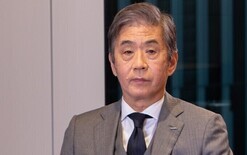Japan chip factory delayed

Taiwan Semiconductor Manufacturing Co (TSMC) has blamed worsening traffic snarls for delays in expanding its base in south-west Japan as a parallel project in America speeds ahead.
Chief executive officer Che-Chia Wei has reaffirmed a commitment to spend another US$100 billion – about NZ$165.6b – ramping up manufacturing in Arizona over the next half-decade, while saying a plan to build a second plant in Japan is suffering slight delays.
He highlights productive discussions with US President Donald Trump earlier this year, even after telling the US president it will be “very difficult” to complete such a big build-out in five years because of a shortage of skilled labour.
The two projects highlight TSMC’s impetus to produce chips outside Taiwan as geopolitical tensions rise and demand grows for Nvidia Corp’s chips, which are essential for developing AI.
TSMC has long operated mostly from its home country, but built a plant in Japan after securing commitments and incentives from Tokyo. It then announced plans to boost its US investment days after Trump took office.
The company’s first factory in Japan, which began operating last year, has been a boon to the local economy. But it’s also overwhelming the community’s farm-town infrastructure, causing shortages in housing and services, and stretching commute times.
“We have created too big an impact on the local traffic,” says Wei “We told the Japanese government we’ll delay the construction until the traffic improves. They said they’ll make improvements as soon as possible.”
Wei hasn’t specified the length of the delay, which he characterised as minor. TSMC said last week that it’s starting construction of the second plant this year. Construction was originally slated to start by December last year.
The world’s largest contract chipmaker sits at the heart of the global technology supply chain, producing chips for cars, Apple’s iPhones and Nvidia’s AI servers.
Governments from Washington to Brussels have courted the company for years, particularly after shortages of certain types of semi-conductors during the Covid-19 pandemic halted production of vehicles, phones, power tools, home appliances and other electronics.
TSMC’s plan to build a second factory in Kumamoto prefecture is key to Japan’s ambitions to regain leadership in semi-conductors and attract engineers to an ageing country.
However, the local community has been unable to fully absorb the sudden influx of workers from TSMC’s first plant even as the company’s plans in the US lowers the urgency of production in Japan.
Kumamoto’s municipalities have been working to ease congestion around the plant, widening roads and encouraging use of public transportation.
“It is our hope TSMC understands what the local community is doing to address this issue,” says a spokesman for Kumamoto. “We will continue to provide support for the construction of the second plant.”
Japan’s chief government spokesman, Yoshimasa Hayashi, adds: “Heightened uncertainty in the global economy, along with challenges including the lack of domestic infrastructure and labour can lead to hesitation among private companies thinking of investing.”
He says Tokyo recognises the need to create an environment that attracts talent and investment from overseas.
The hold-up in Japan echoes earlier hitches in getting production up and running at TSMC’s newest facilities in Arizona, but the company has since made headway.
Then there are questions about the long-term outlook for AI demand. Even before Washington imposed extra tariffs on much of the world before rolling them back, investors had questioned whether big tech firms, such as Microsoft and Meta, will continue to buy Nvidia chips and build data centres at the same pace.
Wei has reaffirmed TSMC is still looking for 2025 revenue growth in the mid-20 per cent range. However, he warns the strengthening Taiwanese dollar is pressuring its margins even though the company expects record profit this year.
TSMC’s executives have stressed that demand, particularly for high-end chips critical to developing AI, has remained resilient. That has helped reassure investors fearful of the Trump administration’s escalating campaign to curtail China’s tech ambitions and impose sky-high tariffs on goods around the world.
For 2025, the market remains nervous about the fallout for the global economy and a sector that supplies critical components to just about every industry on the planet.





